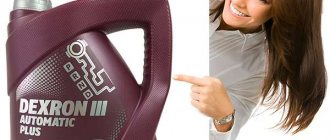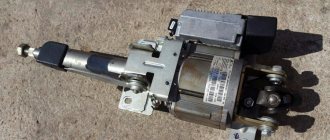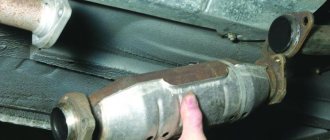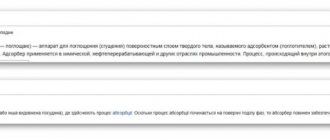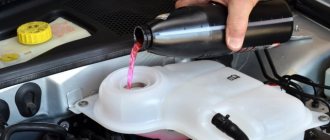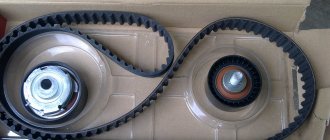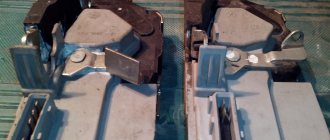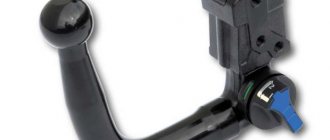The beneficial properties of graphite have been known for centuries. For more than 300 years, it has been actively used to reduce friction in various mechanisms.
The use of graphite as a component of various lubricating compositions significantly expands their capabilities and scope of application.
Despite the emergence of many modern lubricants with higher performance properties, graphite lubricant remains one of the most popular and in demand today in production, in automotive maintenance, and for household applications.
What is graphite grease
Crushed graphite
Products such as lubricants do not have technical characteristics, they have physical and chemical characteristics. Such characteristics depend on what substances it consists of. Previously, graphite was called Graphite USsA. GOST (State Standard) 3333-80.
Graphite is crushed coal. Therefore, the lubricant turns out to be grainy. Crushed graphite fills microcracks, irregularities, and cavities, thereby reducing friction and protecting against corrosion.
It can be used with lithol or solid oil. Graphite with such a lubricant lasts longer.
Specifications
| Indicator name | Standard according to GOST (TU) |
| Appearance and color | Homogeneous ointment from dark brown to black color |
| Dropping temperature, , not less | 77 |
| Effective viscosity, , at , no more | 100 (1000) |
| Ultimate shear strength Pa, at, not less | 100 (1,0) |
| Penetration with stirring, | 250 |
| Colloidal stability, %, no more | 5,0 |
| Mass fraction of water, %, no more | 3,0 |
| Corrosion test | withstands |
Products are released by self-pickup from the warehouse of Energoresurs LLC in St. Petersburg. Delivery of products throughout Russia and abroad by any type of transport is possible.
Prices are given including VAT on the terms of self-pickup of products from the warehouse of Energoresurs LLC in St. Petersburg.
Prices are indicated for a minimum quantity of goods and are negotiated as the volume increases.
The lubricating properties of graphite have been known for a long time: back in the 18th century, it was used to ensure smooth and silent operation of lifting mechanisms. The widespread use of graphite in our time is associated with the development of various industries, including nuclear energy. Progress in the field of mechanical engineering has led to the emergence of a wide range of lubricants, including high-viscosity and greases with the addition of graphite.
Graphite grease is made by thickening petroleum oil with calcium soap and graphite. The resulting composition, which in appearance resembles a homogeneous ointment from dark brown to black in color, is used to treat steel and copper surfaces prone to oxidation. The good connection of graphite films with metal oxides (but not with noble metals) is due to the structural features of graphite: its molecules are weakly bonded to each other, and water and oxygen molecules are always present between the layers. For the same reason, graphite loses its properties as a good lubricant in a vacuum.
Graphite grease - description
The characteristics of graphite lubricant are determined by the components of which it is composed. The composition of graphite lubricant (outdated name “graphite USsA”) in Soviet times was established by GOST 3333-80. A simplified description of its manufacture looks something like this: a synthetic or organic viscous oil (derived from petroleum) is thickened by adding calcium soap and graphite powder. To simplify it as much as possible, solid oil is mixed with crushed graphite. Crushed Graphite Graphite (crushed carbon), which forms the basis of graphite lubricant, is capable of filling microscopic irregularities in parts, while reducing friction.
The use of a material such as graphite in the lubricant is not accidental - it was used to reduce friction between parts 300 years ago. Graphite, as you know, is nothing more than carbon (coal), but in a more “loose” state, as a result of which it is able to fill microscopic irregularities in parts (scratches, cavities, marks from cutting and processing tools, etc. ). This “smoothing” of surfaces significantly reduces the coefficient of friction. Solid oil provides liquid friction of parts - in general, it works like any other lubricant, but in combination with graphite, it allows the latter to remain in the friction zone of parts - shafts, gears, etc.
Characteristics
The current GOST 3333-80, as well as the corresponding technical conditions, indicate the technical and operational characteristics of graphite lubricant.
| Characteristic | Meaning |
| Temperature range of application | from -20°С to +60°С (however, it is allowed to use lubricant at temperatures below -20°С in springs and similar devices) |
| Density, g/cm³ | 1,4…1,73 |
| Dropping point | not lower than +77°С |
| Penetration at +25°C with stirring (60 double strokes) | not less than 250 mm/10 |
| Colloidal stability, % of released oil | no more than 5 |
| Mass fraction of water | no more than 3% |
| Shear strength at +50°C | not less than 100 Pa (1.0 gf/cm²) |
| Viscosity at 0°C at an average strain rate gradient of 10 1/s | no more than 100 Pa•s |
| Tensile strength at +20°С, kg/cm² | |
| tensile | 120 |
| for compression | 270…600 |
| Electrical resistance | 5030 ohm•cm |
| Temperature, °C | |
| decomposition | 3290 |
| maximum permissible operating | 540 |
| average permissible operational | 425 |
| Lubricant oxidation products | CO, CO2 |
| NLGI class | 2 |
| Designation according to GOST 23258 | Ska 2/7-g2 |
When working with lubricant, you must remember and follow the rules below for the safe use of graphite lubricant.
When working with lubricant, observe the following safety and fire safety rules:
- Graphite grease is explosion-proof, its flash point is +210°C.
- If a spill occurs on the surface, the lubricant should be collected in a container, the spill area should be wiped dry with a rag, which should then be placed in a separate, preferably metal, box.
- In the event of a fire, the main fire extinguishing agents are used: finely sprayed water, chemical, air-chemical foam, high-expansion foam and appropriate powder compositions.
Is it possible to make “graphite” yourself?
Powder is not in short supply. It could be found even 30-40 years ago. But lubricants based on it were not always on store shelves. Therefore, car enthusiasts added a little motor oil to the solid oil (mineral water, of course), poured graphite dust (powder) into the container, then stirred for a long time and thoroughly.
The result was the highest quality composition: based on vegetable solid oil, without synthetic thickeners.
Characteristics of graphite grease:
- Operating ambient temperature range: from -20℃ to +60℃ (we are talking about long-term operation). Short-term heating up to +120℃ is allowed, but dripping begins already at +80℃. When used in rubbing parts such as springs, the lower limit may go beyond -20℃.
- The permissible mass fraction of water is no more than 3%, after which an emulsion begins to form.
- Shear strength from 100 Pa. Parameter measurement temperature: +50℃.
- Compressive strength: 400 (+/- 200).
- Tensile strength: 120.
- Penetration more than 250 mm/10. Measurement temperature: +50℃.
- Electrical resistance is no more than 5 kOhm per cm of length.
Properties of graphite grease
Graphite itself is a good conductor of heat and electricity, is not destroyed by moisture, is not affected by static electricity, and is also thermally stable (can withstand high temperatures). The corresponding lubricant also has all these properties, although to a lesser extent.
What is good about graphite lubricant? Its advantages include:
- chemical resistance (when lubricant is applied to working surfaces, its elements do not react chemically with it);
- thermal stability (does not evaporate up to a temperature of +150°C, since the concentration of volatile substances in its composition is minimal, and does not lose its performance characteristics at high temperatures);
- protects work surfaces from moisture;
- has increased colloidal stability;
- explosion-proof;
- has excellent lubricating properties;
- increases wear resistance, mechanical performance and service life of the mechanism where it is used;
- minimizes the number of jams;
- not affected by oil, that is, remains on the surface even if it is present;
- graphite lubricant adheres perfectly to any surface;
- resistant to static electricity;
- has high adhesive and anti-friction properties.
Advantages and disadvantages
If you use litol, for example, Litol-24, or solid oil together with graphite lubricant, then such a mixture will have the following properties:
- physical and chemical properties are preserved at temperatures from -40 to +400;
- effectively repels water;
- protects parts from corrosion.
The disadvantage is that it is abrasive and contains hard particles. In high-precision joints of parts, solid particles will create resistance and scratch the contacting pairs.
Graphite Grease Thickener
Basically, solid oil is used as a thickener.
Solid oil based
The use of solid oil as a thickener does not increase the cost greatly due to the inexpensive price of solid oil.
Color
Thick consistency of gray color.
Release form
Modern technologies allow it to be released in the form of aerosols. This allows you to apply the lubricant using a fine spray rather than using a spatula.
Kinds
It is also sold mixed with copper powder. It's called copper-graphite spray.
Types of thickeners:
- Organic.
- Inorganic.
- Hydrocarbon.
- Soapy.
It makes no sense to make graphite lubricant yourself, since the cost of the original one is not high, and it is impossible to achieve factory characteristics at home.
Why is she so popular?
The market is annually replenished with new types of lubricants, but the popularity of graphite lubricants does not decrease. This is not surprising: its availability, ease of use and high performance indicators leave competitors far behind. The scope of application is so wide that graphite lubricant should be found not only in the garage, but in every home. Servicing cars or household appliances is not complete without the use of lubricants.
The protective properties of graphite lubricant in electrical connections increase resistance and help protect power contacts from short circuits, heat and possible fire.
Application of graphite grease
Application to a threaded connection
In units of machines and mechanisms where there is no high precision, high quality, interaction of mating parts, this type is used.
Excellent for lubricating gear pair mechanisms. It absorbs shocks and vibrations resulting from end runout or axial play. Apply with a grease syringe, hydraulic or pneumatic gun.
Use in everyday life
Since graphite is not afraid of water, I use it to lubricate door and gate hinges and locks.
Application in machine components
Is used for:
- steering mechanisms, steering joints;
- ball joints;
- electrical connections, terminals (from corrosion);
- anti-squeak spring washers;
- caliper guides.
Copper-graphite aerosol is excellent for lubricating brake drums and discs to the hub flanges - this is protection against sticking.
After installing the threaded connections, they must be lubricated with either lithol, grease, or graphite lubricant. Then it will be much easier to unscrew the nuts.
People often ask whether it is possible to lubricate rolling and sliding bearings with graphite grease. Some bearings need to be lubricated with this type.
Also lubricate the end of the muffler. When the lubricant burns out due to temperature, a durable film is formed that protects against moisture and metal rotting.
What types of lubricants are there for threading spark plugs and injectors?
There are several types of lubricants to consider when choosing. They differ in composition, temperature resistance, area of application, and, accordingly, price. Thus, heat-resistant lubricants are divided into:
- Solid oil
- graphite;
- copper;
- ceramic.
To protect threads from corrosion
Graphite-based lubricant has the simplest composition, the smallest operating temperature range, but also the lowest price. Typically, such compounds are used as a lubricant for spark plug threads on gasoline engines. This is especially true for budget cars, whose owners do not want or do not have the opportunity to purchase more expensive lubricants. However, in this case we are not talking about traditional graphite lubricant, which has very modest temperature characteristics.
Copper lubricant for spark plugs is classified as high-temperature. They are made from three main components - crushed fine copper, mineral or synthetic oil, and substances that prevent corrosion. The advantages of using copper grease are a wide operating temperature range, reduced friction, no evaporation and no dew point. Note that before applying copper grease to protect the threads from corrosion and burning, the contacting surfaces (both threads) must be thoroughly cleaned of debris, and it must be applied carefully so that no debris gets on the threads. This will increase the performance properties of the lubricant composition.
Please note that when using copper lubricants, it is necessary to slightly reduce the tightening torque, since otherwise you can simply break the thread on the spark plug. In other words, there is no need to overtighten the candle when installing it! Traditionally, copper lubricants are used to lubricate spark plugs in gasoline engines with elevated operating temperatures and turbo engines.
However, in some cases they are also used as a lubricant for glow plugs, as well as a lubricant for diesel injectors. This is often explained by the fact that copper dissipates heat better than ceramics. This is a very controversial issue, since in this context it is not only the wide temperature range that is important, but the stable operation of the lubricant at high temperatures. That is, so that it does not cake and thicken. But for this purpose, compositions based on synthetic ceramics are still better suited.
Traditionally, copper lubricants are used to lubricate spark plugs in gasoline engines with elevated operating temperatures and turbo engines. However, in some cases they are also used as a lubricant for glow plugs, as well as a lubricant for diesel injectors. This is often explained by the fact that copper dissipates heat better than ceramics. This is a very controversial issue, since in this context it is not only the wide temperature range that is important, but the stable operation of the lubricant at high temperatures. That is, so that it does not cake and thicken. But for this, compositions based on synthetic ceramics are still better suited.
Anti-stick thread compound
Ceramic lubricants for spark plugs are the most modern and technologically advanced. This is ensured by their composition, which includes high-temperature elements (ceramic dust penetrating into the pores of the metal), which significantly expands the operating range of the lubricant element. They are usually sold in the form of thermal paste, which is why they are often called glow plug paste. The use of such a composition is due, firstly, to temperature stability, that is, the lubricant does not burn out and thicken, and secondly, to its ability to withstand high mechanical loads to which the glow plug is exposed. Therefore, the optimal answer to the question of how to lubricate glow plugs before installation is the answer - it is best to use ceramic high-temperature lubricant for this.
Some spark plug manufacturers (such as DENSO) explicitly state that their products do not need to be lubricated before installation. However, this information must be further clarified in the instructions or on the packaging!
Advantages and disadvantages of lubricating composition
Lubricants created on the basis of graphite have a lot of positive aspects and undoubted advantages. The following points are worth highlighting as advantages:
- High thermal and electrical conductivity, which allows even contacts to be lubricated.
- It is resistant to moisture, but when mechanically mixed with water an emulsion is formed.
- Heat-resistant and chemically neutral product.
- Resists corrosion and is stable in use.
- It has properties that reduce friction and prevent mechanisms from jamming.
- Does not react to static voltage and has excellent anti-friction performance.
- Affordable price - for 800 grams you will have to pay only 110 rubles or more, taking into account the region where the lubricant is sold.
The lubricant also has some minor drawbacks. It is worth noting here that the temperature range of the product is not very significant. It is not worth using the product in excessively rubbing parts with precision clearances due to severe and rapid wear. Additional information about lubrication is presented in the video:
Composition of graphite lubricant
Traditionally, lubricant is a plastic mass resembling thick sour cream. The product cannot be used in liquid form. After applying the composition to the work surface, a thin dry film is formed.
If we talk about the composition, the material is not prepared directly from graphite. The powder is added to the product after preparing the base. For the most part, graphite lubricant appeared after graphite began to be added to grease.
The product is based on an industrial oil composition. The base is prepared by processing petroleum products. Natural fatty acids or synthetic additives are used for thickening. Sometimes manufacturers add lithium soap for this purpose. To obtain high-quality lubricant, finely dispersed graphite must be added to the prepared mass.
